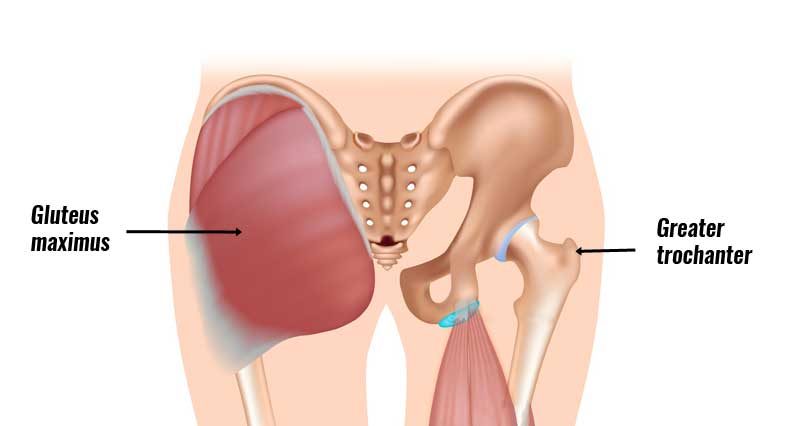Snapping hip is a condition often seen in dancers which results in a snapping noise and feeling around the hip joint. A sports injury therapist can recommend the best treatments and exercises to do to help you recover from the injury.
Go direct to:
Symptoms
- A snapping hip can be internal or external.
- External symptoms include a clicking or snapping feeling on the outside of the hip.
- Internal snapping hip will be felt on the inside or front of the hip.
- Sometimes an audible snapping noise can be heard.
- This is not usually a painful condition although internal is more likely to be painful.
What is a Snapping hip?
It is a condition often seen in dancers which results in a snapping noise and feeling around the hip joint. This can either be external (lateral) or internal.
External (lateral) snapping hip is felt at the outside of the hip and is caused by the muscle fibres of Tensor Fascia Lata (TFL) or Gluteus Maximus flicking across the greater trochanter or bony protrusion on the upper part of the femur or thigh bone. The clicking feeling is usually not painful.
Internal is caused by the Iliopsoas muscle as it flips across the Iliopectineal eminence (front part of the pelvis). This form is more likely to produce pain.
Treatment
What can the athlete do?
- Rest may help, but not always.
- If the muscles involved are tight then simply resting them may not be enough.
- If the injury is painful due to friction causing a tendon to become inflamed then rest and applying ice or cold therapy can help.
- Stretch the muscles around the thigh and hip. This is important as the muscles need to be relaxed and loosened to stop them snapping.
- Visit a sports injury specialist.
- Get a coach to check your technique. It might be that faulty technique is contributing to a snapping hip.
What can a sports injury specialist do?
- Sports massage and myofascial release techniques can be applied to any surrounding muscles which may be tight.
- Sports massage can relax any tight muscles and help stretch them to release pressure over the area the snapping is occurring.
- Prescribe pelvic stability exercises.
- Occasionally surgical release may be required.








